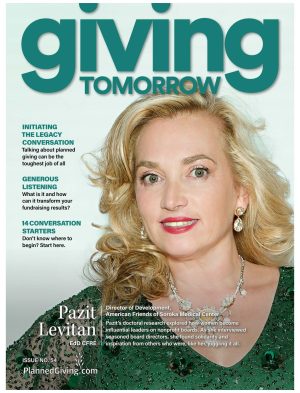I just love Tom Ahern’s sarcastic line:
“Oh, goody! Look what’s come in the mail, honey. It’s the latest issue of our death brochure. Round up the kids!”
(Tom calls planned giving newsletters “death brochures.”)
Anyways … I still come across development folks who ask me to produce a planned giving newsletter. I usually succeed in convincing them as to why these gift planning publications are not your most effective marketing tools. Most agree, and the ones who don’t I send elsewhere with their business. I really don’t need the reputation of producing products that don’t get results.
What’s the Bottom Line?
Here’s the question we need to ask first: can we really make such a newsletter work?
The answer is an astounding yes.
Is it worth the return on investment (ROI)?
You be the judge … read on. And remember, this is written from a marketing perspective. That’s our business at PlannedGiving.Com.
Consistency is Key
If you want an effective newsletter:
- You need to establish a brand and be consistent from one issue to the next, and you need to stay in it for the long haul. At first, your newsletter, no matter how great, will not serve you. It will need to catch on over several issues (at least 2 years). Be ready to commit — this is critical to say the least. It took our newsletter (Planned Giving Tomorrow™, now Giving Tomorrow™) at least 3 years to achieve a decent readership base.
- You can’t skip issues — this will set you back to square one.
- A donor-centric newsletter should be a monthly publication. Possibly quarterly. If you just publish twice a year, it will take at least three to four times as long to catch on, if it ever does. Once a year? Don’t even bother. Believe me — and I know. I am a marketing guy.
The Solution to Make This Happen
So how do you pull this off? Unless you have ace designers, writers and editors on staff who really care as much as you do — and plenty of time — you’ll need to outsource. (Note the words “who really care.”)
- At the very least, you’ll probably need to hire an experienced, dedicated copywriter and then outsource the rest. You can also download pre-written newsletter content and brand them to your nonprofit.
- Be careful where you turn. There are many “planned giving newsletter” vendors (that are print shops in disguise) … but they all turn out canned (read: useless) products. They do this simply to keep costs down, and you get what you pay for — often less, if you consider the cost of missed opportunity.
- Outsource to a freelancer (not a newsletter company) who does not have high overhead and can commit the additional time and resources required to do it right. This will 1) save you money, considering more time needs to be invested into the project and 2) allow you to find a good, local partner for the long term.
Cater to Donors
If you really want a publication for your donors, here’s what does work: donor recognition newsletters. Even then, it takes a concerted effort, careful consideration, and your full involvement! Each newsletter needs to have:
- Very interesting topics. Not interesting to you, the fundraiser, but interesting to your donors. That means relatable stories about donors; about your organization’s cause; about who your group has helped or what your mission has achieved.
- An engaging style. Humor really works — in the articles, and in the form of cartoons, too (which are easy and affordable to get).
- Good photography. This is a must — and not just stock photos, though they’ll help, but well-taken pictures of donors, fundraising events, etc. So you’ll need a reliable photographer, too.
Circling the Recycling Bin
So ask yourself, before you invest energy to produce a marketing product that, eventually, requires the donor’s death, would YOU want to read it?
I didn’t think so.
The Last Word
Producing a planned giving newsletter should not be a commitment to take lightly. Think ROI and look at other marketing tools such as planned giving postcards and The Planned Giving Newslet. That’s where we come in at PlannedGiving.Com. In fact, before haphazardly developing such so-called marketing tools, you should first have a 12-Month Marketing Plan in place.
Newsletters. Doing it right is a full-time job.






